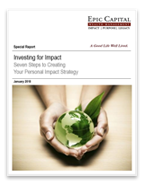Market Update – A Recovery or Relief Rally in Stocks?
Sep 6, 2024
 September is living up to its reputation as a historically bad month for stocks. The S&P 500 fell 2.3% in the first two trading days, with a highly anticipated August employment report on deck tomorrow morning. The sudden change in momentum and jump in volatility has left many investors questioning the sustainability of the recovery from the August lows and if the rebound was simply a relief rally off oversold levels.
September is living up to its reputation as a historically bad month for stocks. The S&P 500 fell 2.3% in the first two trading days, with a highly anticipated August employment report on deck tomorrow morning. The sudden change in momentum and jump in volatility has left many investors questioning the sustainability of the recovery from the August lows and if the rebound was simply a relief rally off oversold levels.
As highlighted below, August was a wild month for stocks. The S&P 500 sank over 8% in 14 trading days before finally hitting an intraday low of 5,119 on August 5. That week was primarily plagued by the unwinding of the yen-carry trade, weak manufacturing data, and a disappointing employment report. As economic data improved and currency market volatility subsided, stocks pared losses with an impressive rebound. However, the recovery fell just short of retesting the prior July highs. It was also underpinned by below-average volume and a surge in retail buying based on changes in U.S. equity market positioning.
And while market breadth metrics remain constructive, participation in more defensive areas of the market has supported the broadening-out theme. Technology, the S&P 500’s biggest sector weight at 30%, has been a source of capital for the rotation and is close to confirming a top in relative terms to the broader market — technically, a close below the August lows on the sector vs. S&P 500 would imply a top has been made.
Where do stocks go from here? Recent technical damage and momentum indicators point to elevated downside risk ahead. Support sets up at the 20- and 50-day moving averages (5,518 and 5,506, respectively), followed by a price gap at 5,455 and the August lows at 5,119. In the event of a rally, resistance for the S&P 500 comes into play at the August and July highs at 5,648 and 5,667, respectively.
S&P 500 Recovery Stalls Just Shy of the July High

Source: LPL Research, Bloomberg 09/05/24
Disclosures: Past performance is no guarantee of future results. All indexes are unmanaged and can’t be invested in directly.
A Closer Peek at the Recovery
One of the more surprising factors in the volatility over the last month has been how quickly stocks fell and recovered. The drop of over 8% in 14 trading days into the August 5 low was quickly followed by an 8% rebound in the same number of trading days. This created a so-called “V-shaped” recovery for the broader market, which is rare but not unprecedented. Since 1950, we found only 15 other occurrences with comparable drawdowns and recoveries over this short period. Historically, forward returns after the S&P 500 rallied back at least 8% in 14 days (after being down at least 8% in 14 days) have been constructive over the following three- to 12-month period. Furthermore, 93% of occurrences produced positive returns 12 months later.
The strong performance leading into the recent V-shaped recovery in August was notable. It marked the only period with a positive six-month return and one of only two periods with a positive three-month return before the V-shape was completed.
S&P 500 Performance Before and After a V-Shaped Recovery

Source: LPL Research, Bloomberg 09/05/24
Disclosures: Past performance is no guarantee of future results. All indexes are unmanaged and can’t be invested in directly.
Summary
September is off to a weak start as the recovery on the S&P 500 stalled near resistance from the July highs. Momentum indicators have turned bearish, and signs of defensive leadership have begun to emerge, pointing to more volatility ahead. Breakdowns in longer-duration Treasury yields, crude oil, and copper, along with a simultaneous breakout in gold, provide a warning sign of rising risks to an economic soft landing.
LPL’s Strategic and Tactical Asset Allocation Committee (STAAC) maintains its neutral stance on equities. We expect volatility to remain elevated over the next few months, and believe a better entry point back into the longer-term bull market is likely.
For more insights and resources, be sure to sign up for our Weekly Market Commentary. Follow our YouTube channel where we regularly post our Epic Market Minute videos. Follow us on LinkedIn, or like us on Facebook. And as always, please don’t hesitate to reach out to a dedicated service professional at Epic Capital.
Important Disclosures
This material is for general information only and is not intended to provide specific advice or recommendations for any individual. There is no assurance that the views or strategies discussed are suitable for all investors. To determine which investment(s) may be appropriate for you, please consult your financial professional prior to investing. Investing involves risks including possible loss of principal. No investment strategy or risk management technique can guarantee return or eliminate risk. Indexes are unmanaged and cannot be invested into directly. Index performance is not indicative of the performance of any investment and does not reflect fees, expenses, or sales charges. All performance referenced is historical and is no guarantee of future results. This material was prepared by LPL Financial, LLC. All information is believed to be from reliable sources; however LPL Financial makes no representation as to its completeness or accuracy. Unless otherwise stated LPL Financial and the third party persons and firms mentioned are not affiliates of each other and make no representation with respect to each other. Any company names noted herein are for educational purposes only and not an indication of trading intent or a solicitation of their products or services. Asset Class Disclosures – International investing involves special risks such as currency fluctuation and political instability and may not be suitable for all investors. These risks are often heightened for investments in emerging markets. Bonds are subject to market and interest rate risk if sold prior to maturity. Municipal bonds are subject and market and interest rate risk and potentially capital gains tax if sold prior to maturity. Interest income may be subject to the alternative minimum tax. Municipal bonds are federally tax-free but other state and local taxes may apply. Preferred stock dividends are paid at the discretion of the issuing company. Preferred stocks are subject to interest rate and credit risk. They may be subject to a call features. Alternative investments may not be suitable for all investors and involve special risks such as leveraging the investment, potential adverse market forces, regulatory changes and potentially illiquidity. The strategies employed in the management of alternative investments may accelerate the velocity of potential losses. Mortgage backed securities are subject to credit, default, prepayment, extension, market and interest rate risk. High yield/junk bonds (grade BB or below) are below investment grade securities, and are subject to higher interest rate, credit, and liquidity risks than those graded BBB and above. They generally should be part of a diversified portfolio for sophisticated investors. Precious metal investing involves greater fluctuation and potential for losses. The fast price swings of commodities will result in significant volatility in an investor's holdings. Securities and advisory services offered through LPL Financial, a registered investment advisor and broker-dealer. Member FINRA/SIPC. Not Insured by FDIC/NCUA or Any Other Government Agency | Not Bank/Credit Union Deposits or Obligations | Not Bank/Credit Union Guaranteed | May Lose Value
Tags: Current Events, Investing
More Insights
April showers came a month early as stocks fell in March. Tariffs were the primary cause of the market jitters, although that uncertainty became too much for markets to shrug off once economic data started to weaken.
A successful investor maximizes gain and minimizes loss. Though there can be no guarantee that any investment strategy will be successful and all investing involves risk, including the possible loss of principal, here are six basic principles that may help you invest more successfully.
Losing a spouse is a stressful transition. And the added pressure of having to settle the estate and organize finances can be overwhelming. Fortunately, there are steps you can take to make dealing with these matters less difficult.
Families are one of the great joys in life, and part of the love you show to your family is making sure that their basic needs are met. While that’s only to be expected from birth through the high school years, many households are helping their adult children well into their twenties and beyond at … Continue reading “Retirement and Adult Children”
Life insurance can be an excellent tool for charitable giving. Not only does life insurance allow you to make a substantial gift to charity at relatively little cost to you, but you may also benefit from tax rules that apply to gifts of life insurance.
Services
Epic Capital provides the following comprehensive financial planning and investment management services: Learn More >


 Top of Page
Top of Page











